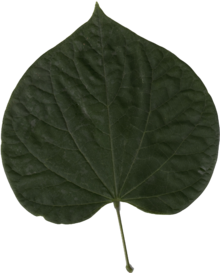
 24
24




 11
11







 It can be found growing wild in my area and has grown well in a mostly shaded area where it is planted. It has thin light brown seed pods that can be a little unsightly, but I personally think they are neat! They self seed themselves pretty well also, so you can get more of them pretty easily if needed!
It can be found growing wild in my area and has grown well in a mostly shaded area where it is planted. It has thin light brown seed pods that can be a little unsightly, but I personally think they are neat! They self seed themselves pretty well also, so you can get more of them pretty easily if needed!


Striving to grow things as naturally, simply, and cheaply as possible! 
My YouTube channel
 11
11





Invasive plants are Earth's way of insisting we notice her medicines. Stephen Herrod Buhner
Everyone learns what works by learning what doesn't work. Stephen Herrod Buhner
 4
4





 14
14




 10
10




A build too cool to miss:Mike's GreenhouseA great example:Joseph's Garden
All the soil info you'll ever need:
Redhawk's excellent soil-building series






 19
19




List of Bryant RedHawk's Epic Soil Series Threads We love visitors, that's why we live in a secluded cabin deep in the woods. "Buzzard's Roost (Asnikiye Heca) Farm." Promoting permaculture to save our planet.
 2
2




 to produce its first nuts?
to produce its first nuts? 5
5




Joseph Lofthouse wrote:
My favorite tree grows on the lawn of the county courthouse where our farmer's market it held. Her roots are wide and gnarly, perfect for providing a bit of cover for a weary primate to hunker down and find refuge from the commotion of the big city. Her energy is calm and long-term, in stark contrast to the rushing short-term energy on the nearby streets. I visit her most every week after market, and thoroughly enjoy being embraced by her roots.
Myrth
https://ello.co/myrthcowgirl
 14
14







A human being should be able to change a diaper, plan an invasion, butcher a hog, conn a ship, design a building, write a sonnet, balance accounts, build a wall, set a bone, comfort the dying, take orders, give orders, cooperate, act alone, solve equations, analyze a new problem, pitch manure, program a computer, cook a tasty meal, fight efficiently, die gallantly. Specialization is for insects.
-Robert A. Heinlein
 3
3




Examine your lifestyle, multiply it by 7.7 billion other ego-monkeys with similar desires and query whether that global impact is conscionable.
 7
7








Jondo Almondo wrote:Guava - high Vitamin C, makes good wine.
Because there is a hundred in my village, feeding kids at the school, making jam for the frugal. Delighting the fruit bats!
Most of the trees have grown by kids on bikes, tossing half eaten fruit into ditches for many decades.
Even when there's no fruit, you can crush a leaf and get the aroma of guava stimulating your nose hairs.
 4
4




Anne Miller wrote:My favorite tree is the Mimosa, Albizia julibrissin.
It is a beautiful tree and they are attractive to bees, butterflies and hummingbirds.
Being in the Fabaceae family, they are excellent nitrogen fixers.

Source
"The only thing...more expensive than education is ignorance."~Ben Franklin. "We can easily forgive a child who is afraid of the dark; the real tragedy of life is when men are afraid of the light." ~ Plato
 4
4




Permaculture...picking the lock back to Eden since 1978.
Pics of my Forest Garden
 2
2




Mike Homest wrote:Steve,
great suggestions I have already checked out the eastern redbud, that would make a really nice contrast in the garden, perhaps I can get one.
The Japanese plum can be one of those:
Japanese plum is a common name for several trees producing edible fruits and may refer to:
Prunus mume
Prunus salicina
Loquat (Eriobotrya japonica)
Without the Latin name it is somewhat difficult to find, as even if you are native speaker, which I am not, there can be several names for one or more different trees.
Pecan tree is somehow related to walnut, but needs fewer years (5-8 ) to produce its first nuts?


Striving to grow things as naturally, simply, and cheaply as possible! 
My YouTube channel
 11
11




Jd
 3
3




You are welcome to check out my blog at http://www.theartisthomestead.com or my artwork at http://www.davidhuang.org
 1
1




Greg Martin wrote:Hi Mike. My favorite tree is also the chestnut. For the food (gracefully given while building the soil) and form, but also because some of them can end up living for 1000s of years. I love the idea that perhaps by some lottery like luck that something I plant will last that long and be loved by so many generations of people and wildlife (and perhaps fungi and other plants....totally open to that :) ). I will stack the deck and plant lots of them!
 8
8




![Filename: Iron-Barks-with-some-Grey-Gums.jpg
Description: [Thumbnail for Iron-Barks-with-some-Grey-Gums.jpg]](/t/102608/a/72034/Iron-Barks-with-some-Grey-Gums.jpg)
![Filename: Coat-Of-Arms.jpg
Description: [Thumbnail for Coat-Of-Arms.jpg]](/t/102608/a/72036/Coat-Of-Arms.jpg)
'Every time I learn something new, it pushes some old stuff out of my brain.'
 1
1




 4
4




Standing on the shoulders of giants. Giants with dirt under their nails
 5
5




This is all just my opinion based on a flawed memory





Mike Homest wrote:
Jondo Almondo wrote:Guava
Sounds interesting, unfortunately it does not support frost. -(
Examine your lifestyle, multiply it by 7.7 billion other ego-monkeys with similar desires and query whether that global impact is conscionable.




Jondo Almondo wrote:
Mike Homest wrote:
Jondo Almondo wrote:Guava
Sounds interesting, unfortunately it does not support frost. -(
Haven't seen a frost here in decades.
That said, regular guavas can survive very light frosts and I understand that strawberry guava is much more cold tolerant - a little less hardy, but much more tasty.
 2
2




Examine your lifestyle, multiply it by 7.7 billion other ego-monkeys with similar desires and query whether that global impact is conscionable.
 3
3




-Nathanael
 3
3




 4
4




 8
8




My philosophy book "Serenity of Simplicity": https://www.amazon.com/Serenity-Simplicity-Ideas-Liberty-Reason/dp/1070961221/ref=sr_1_1?keywords=luke+furgason&qid=1569634323&sr=8-1
 2
2




Mike Homest wrote:My favorite tree is chestnut.
 2
2




Kevin Young wrote:
I am surprised Moringa has not made it on this list of favorites. I only started growing them (in south Texas) but I love how fast they grow and how much food they give (I blend the leaves and substitute for spinach in a saag paneer-style Indian dish).
 2
2










 1
1




Other people may reject you but if you lie in the forest floor for long enough the moss and fungi will accept you as one of their own!
 1
1




Gamer by night https://www.youtube.com/
 4
4




Snake fruit farmer from Indonesia, come over to my blog sometime thesnakefruit.com
 1
1




Each generation has its own rendezvous with the land... by choice or by default we will carve out a land legacy for our heirs. (Stewart Udall)

|
Politics is a circus designed to distract you from what is really going on. So is this tiny ad:
Freaky Cheap Heat - 2 hour movie - HD streaming
https://permies.com/wiki/238453/Freaky-Cheap-Heat-hour-movie
|



